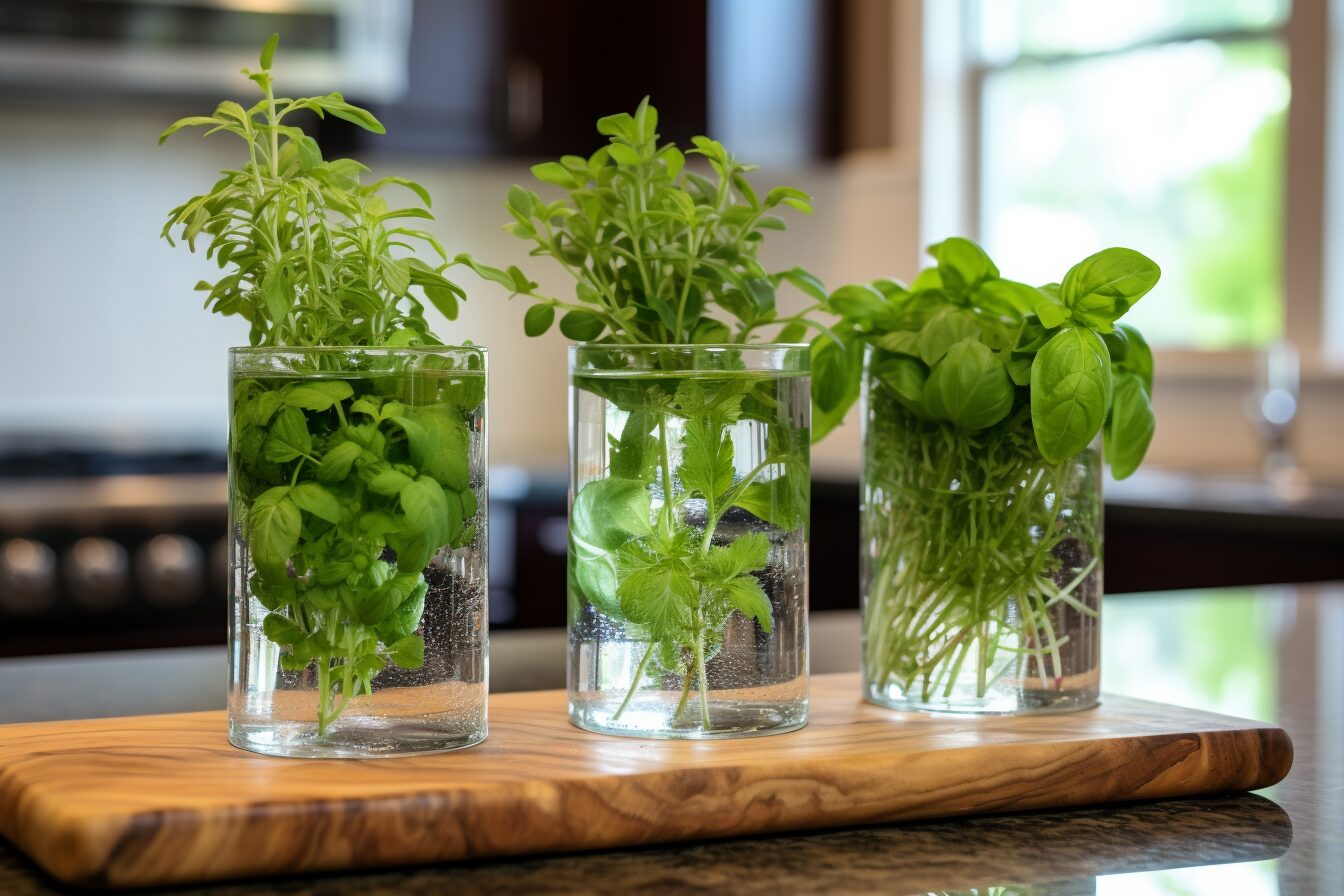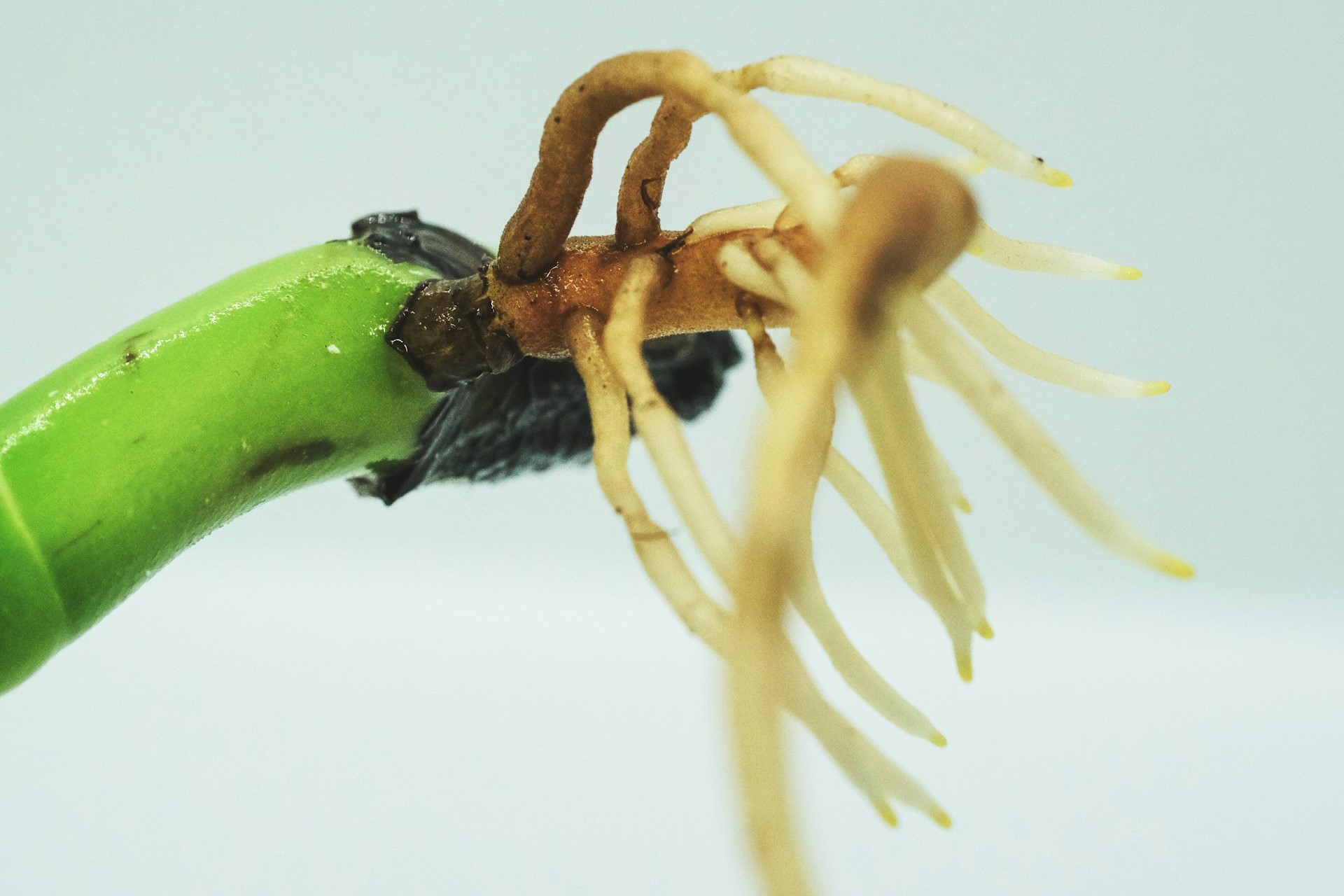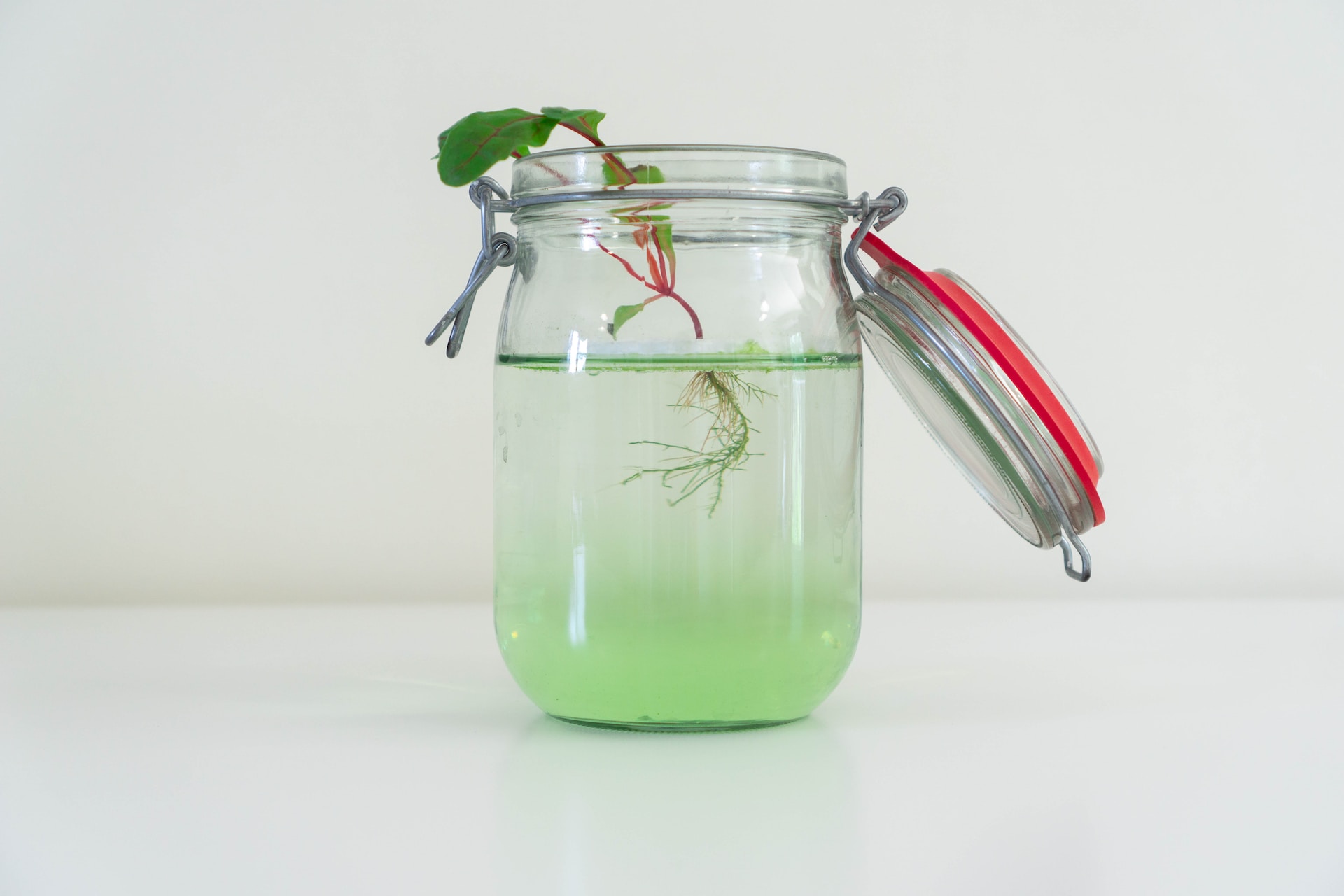
How to Grow Herbs in Water (And Which Herbs to Choose)
We are reader-supported. When you buy through links on our site, we may earn affiliate commission.
Plenty of people want to learn how to grow herbs in water because it’s one of the most successful methods. You don’t have to worry about fertilizer, pests, or soil nutrients.
What Herbs Can You Grow in Water?
The first step to how to grow herbs in water involves figuring out which ones can survive without soil. Surprisingly, most of them don’t really need dirt — they can thrive in a plain jar full of liquid. That being said, your preferences may influence what you pick.
Technically, you can grow peppermint, spearmint, candyleaf, basil, rosemary, parsley, thyme, oregano, sage, tarragon, fennel, dill, cilantro, chives, lemon balm, lemon verbena, marjoram, and lavender. However, they all have different needs — some you may not want to put up with.
For instance, each one has a different time to root after being placed in water. Where some only need days, others require weeks. For example, rosemary takes at least two months on average. If you don’t want to wait that long, it’s not the best choice for you.
Fortunately, plenty of popular herbs have nearly identical development patterns. For example, cilantro, rosemary, and thyme are fantastic companion plants because they have similar growing conditions. If you grow them in sets like this, you won’t have to worry about remembering every unique need each one has.
The Tools You Need to Grow Herbs in Water
Before you figure out how to grow herbs in water, you need to gather the right tools. Even though you only need four things, you have to be somewhat particular.
Here’s everything you’ll need:
- Clean water: The water must be clean, so use spring or filtered. While distilled lacks the necessary nutrients, tap water often contains chlorine or excess minerals. Make sure it’s room temperature so you don’t shock your cutting.
- Scissors: Although you can technically rip a cutting right off of your mother plant, it’s in your best interest to use scissors. After all, you don’t want to damage either of them.
- Glass jar: You need a clean jar to put your cutting in. While you could technically use any material, glass is best. It lets you easily see the stem and water clarity to check for signs of pests or disease.
- Rubbing alcohol: You use rubbing alcohol to sterilize your scissors and jar. Anything that comes into contact with your cutting should be clean.
Once you get every tool you need, you can begin learning how to grow herbs in water. Fortunately, the entire process is straightforward.
How to Grow Herbs in Water
Figuring out how to grow herbs in water starts with placing cuttings — small sections of an existing plant — in water. You can’t exactly uproot a fully developed plant and put it in a mason jar. Instead, you need to use freshly cut new growth.
Where you get your cutting depends on the herb you want to grow. Usually, you look for a node on the stem and make the cut there. If you don’t already have a fully grown, healthy mother plant, you’ll have to grow seedlings in soil to get one.

Once you have your cutting, you place it in a glass jar of clean water. Make sure you submerge the stem fully, but keep the leaves above water — this way, you prevent rotting and give it the best chance of success.
Placement is the most important thing to consider. You want to put your cutting in a well-lit area like a windowsill. In general, herbs require six hours of natural light daily. Whether yours needs low or full light depends on what type it is.
If you’re impatient and want to see growth right away, treat your cutting with rooting hormone to stimulate growth. You’ll see results in 2 – 8 weeks at the earliest. Although that might seem like a long time, some herbs can take two or more months to root.
How Do You Take Care of the Herbs?
Once you know the basics of how to grow herbs in water, you need to learn about maintenance. For starters, you want to change the water frequently — once every day or so — to keep your herb healthy.
Unlike soil-based plants, water-propagated herbs don’t need fertilizer. Still, you can fertilize them with spray or droplet-based supplements like magnesium or nitrogen. In our experience, it isn’t really necessary. As long as you change the water regularly, your herb will grow just fine.
You should also know how to check for signs of disease, damage, and pests. Every good plant owner needs to remember the most common signs. If the leaves, water, or stems change color or consistency, it usually means you have to act fast to save your herbs.
What to Do if Something Goes Wrong
Even if you know everything there is to know about how to grow herbs in water, you’ll still run into the occasional problem.
- Slimy Stems
A slimy stem is a sure sign of decay and rot. Throw the stem out as soon as you see this or you’ll risk losing your entire herb. This kind of thing happens when the water, jar or cutting tools have bad bacteria, meaning you can prevent it by thoroughly cleaning and filtering everything that touches your herbs.
- Yellow Leaves
If your leaves are yellow, there’s a strong chance they don’t have enough nutrients in their system. Alternatively, it could be because you’re low on liquid. You need to make sure you’re using the right kind of water — spring or filtered — and the jar is full. If your herbs need a bigger boost, you can always use spray supplements.
- Grimy Stems
Have you ever seen brown, white, or green cotton-like growth that looks limp and slimy when you pull it out of the water? It could be bacteria, mold, or algae, which are sure signs of an unclean jar or cutting tools.

Although these things can lead to rot, they aren’t necessarily a sign your herb is rotting right now. To fix it, rinse off the grime with clean water. Then, rinse out your jar with hot, soapy water and swirl some rubbing alcohol inside before the final rinse.
- Wilting Leaves
Usually, plants’ leaves wilt when they don’t have enough water. Make sure you’re regularly topping up and refilling your jars. Alternatively, the culprit may be sunlight — if your plants don’t get enough light, they might wilt.
- Cloudy Water
Cloudy water usually only appears when it’s been too long since you’ve changed the water in your jars. Make sure you’re dumping out and refilling it daily. At the very least, you need to do it every few days.
- Dewy Leaves
Unfortunately, dewy leaves are the worst because they’re a pain to fix. What you see — the tiny, clear droplets that are sticky to the touch — is actually honeydew. This is the secretion mealybugs, aphids, spider mites, fungus gnats, scale, and whiteflies leave behind. They’ll jump to different herbs and kill your whole garden unless you get them under control.
You can fix it by carefully, gently going over each leave with a cotton swab dipped in rubbing alcohol. Alternatively, you can use neem oil or another pesticide-free, food-safe bug spray. Since companion planting wards off pests, consider using it as preventative care.
- Brown Leaves
Brown leaves usually indicate over-exposure to sunlight, excess water, or pest damage. Since you can’t really over-water herbs you’re growing without soil, it’s likely the other two options. Try moving your jars to a low-lit area for a week or so and check for pests.
Now You Know How to Grow Herbs in Water
Now that you know how to grow herbs in water and care for them year-round, you can get started. Truthfully, it’s a straightforward process. Although we’re offering great advice, you’ll do the most learning through hands-on trial and error.
Share on
Like what you read? Join other Environment.co readers!
Get the latest updates on our planet by subscribing to the Environment.co newsletter!
About the author
Steve Russell
Steve is the Managing Editor of Environment.co and regularly contributes articles related to wildlife, biodiversity, and recycling. His passions include wildlife photography and bird watching.





